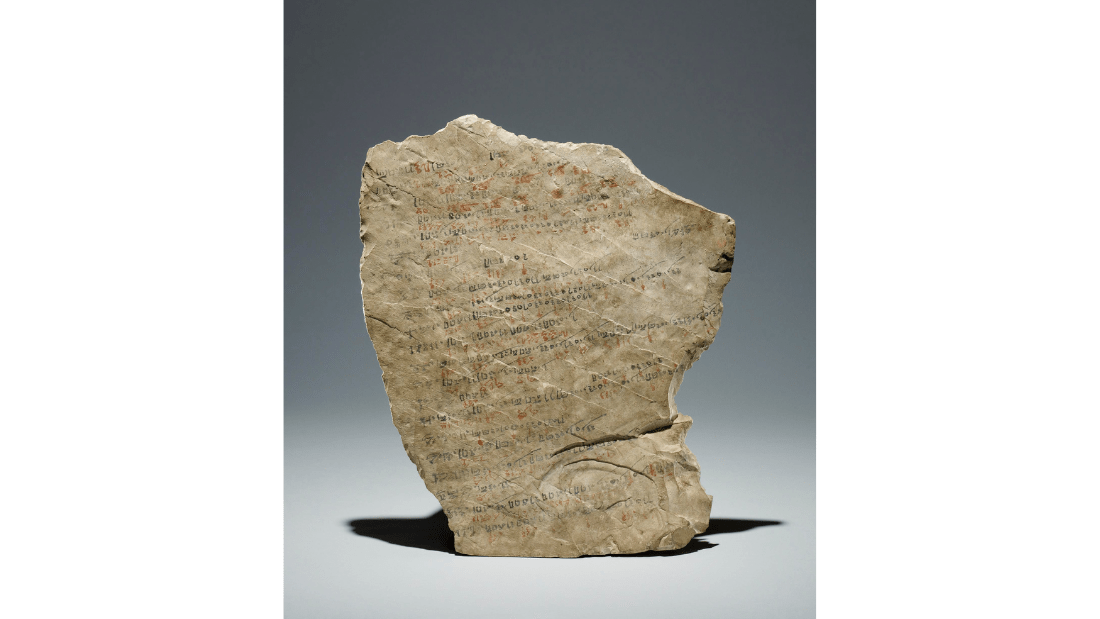In a remarkable intersection of history and modernity, an ancient limestone tablet, dating back over 3,000 years, offers us a mesmerizing portal into the heartbeat of human existence—a connection between eras that spans millennia. At the core of this aged relic lies a revelation that transcends time: the art of absence management is a practice deeply etched into the annals of human society.
This historical artifact, affectionately referred to as an ostracon, bestows upon us a unique glimpse into the labor-management practices of ancient Egypt, unfolding during the illustrious reign of Ramses II, around 1250 BCE.
As we embark on a journey through the corridors of time, deciphering the meticulously inscribed hieratic script on this aged tablet, we unearth not merely the labor patterns of a bygone era, but rather, an intricately woven tapestry of existence that mirrors the intricacies of modern-day work-life balance.
A Glimpse into the Past: Where the Ostracon Was Found
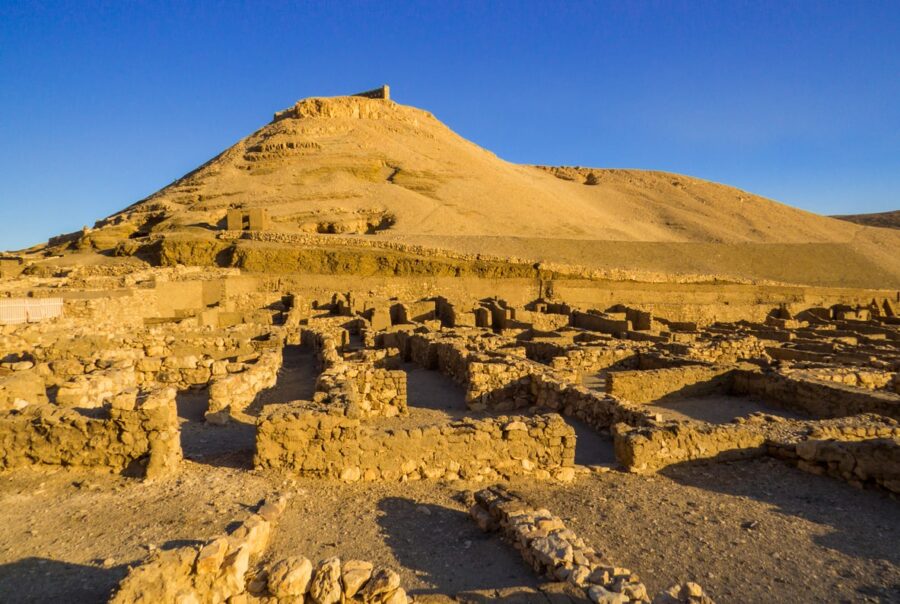
Photo: View of the ancient archaeological site of Deir el-Medina in Luxor, Egypt
Credit: iStock, Diego Fiore
Imagine standing amidst the sun-drenched landscapes of ancient Thebes, a city that once thrived along the fertile banks of the Nile, its heartbeat echoing through the bustling community of Deir el-Medina. Here, within the very heart of this historical tapestry, lies an artifact of profound significance—an ostracon, etched with ink and time, its surface bearing witness to the daily rhythms of labor and life in a world long past.
Intriguingly, it was amidst the archaeological excavations of the 19th Dynasty settlement that this limestone tablet saw the light of day once again. Carefully unearthed from the layers of history, the ostracon emerged as a silent sentinel of antiquity, carrying with it the echoes of voices that toiled and triumphed over three millennia ago. The journey from its moment of creation, during the reign of Ramses II around 1250 BCE, to its rediscovery, offers a tangible connection to the aspirations, struggles, and dynamics of a workforce whose endeavors shaped the very foundations of ancient civilization.
As we stand upon the intersection of history and the present, the ostracon takes on a role much grander than a mere artifact. It becomes a portal—a passage that defies the confines of time, enabling us to peer through the veil of ages and glimpse the essence of humanity’s eternal quest to reconcile the demands of work with the yearnings of life.
While the modern world has witnessed revolutions, transformations, and innovations, the core challenge of harmonizing the intricate dance of labor and personal well-being remains a universal constant.
Decoding the Past: Insights from the Inscriptions
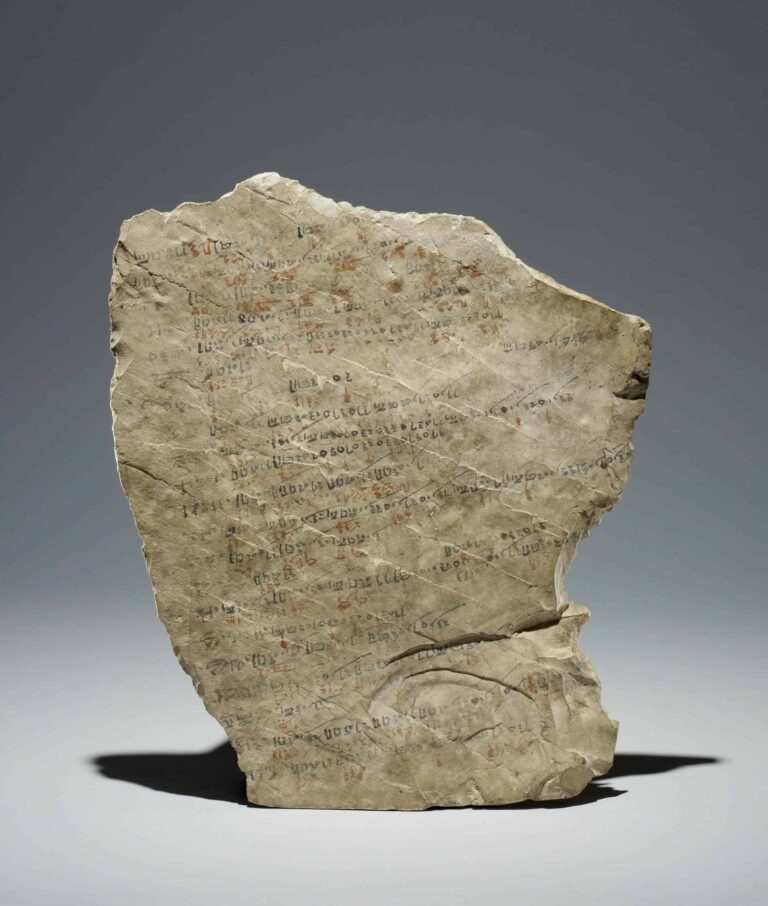
Photo: Ancient Egyptian Tablet, listing workers and their reasons for being absent, 19th Dynasty (Year 40 of Ramses II), circa 1250 BC
Etched upon the surface of the ostracon are not just inked marks, but a vivid reflection of the ebb and flow of lives long gone. Each carefully recorded name and date offers a fleeting yet profound window into the daily lives of those who once toiled along the banks of the Nile. As we explore the script, we unearth a mosaic of reasons behind absences—a mosaic that speaks of both the ordinary and the extraordinary.
The inscriptions on this ancient tablet provide us with a diverse array of reasons for work absences, shedding light on the challenges and dynamics of the workers’ lives.
Let’s journey through some of the most intriguing examples:
This worker’s inscriptions reveal a recurring pattern of being absent “WITH HIS BOSS” This showcases the prevalence of collaborative tasks and the importance of cooperation in the workforce. It suggests that assisting one’s superior was a recognized practice that occasionally led to missed workdays.
Seba’s records recount an unexpected encounter with a scorpion that resulted in his absence from work. This example showcases the influence of unforeseen events on the work routine, reflecting how accidents and natural incidents could disrupt work just as they can in the modern world.
Aapehti’s inscriptions demonstrate the intersection of personal and work-related duties. Not only is he absent due to illness, but he is also engaged in religious activities like “OFFERING TO THE GOD” illustrating the intricate balance between work and spiritual responsibilities.
Nakhtmin’s inscriptions provide a glimpse into the everyday tasks that workers engaged in. From “FETCHING STONE FOR THE SCRIBE” to “LIBATING” these reasons reflect the diverse roles that workers performed beyond their core responsibilities.
Pennub’s records are particularly interesting, depicting instances of assisting “THE SCRIBE” and being absent while “HIS MOTHER WAS ILL” This emphasizes familial obligations and the significant role they played in shaping work attendance.
These examples showcase the myriad reasons that led to work absences, ranging from family matters and illness to collaborative tasks and religious duties. While separated by centuries, the motivations behind these absences bear striking resemblances to the complexities faced by the modern workforce.
As we examine these inscriptions, it becomes evident that the challenges and considerations of managing work attendance are deeply ingrained in the human experience. The ostracon transcends time to bridge the gap between ancient and contemporary work environments, underlining the enduring quest to strike a harmonious balance between work and life—a quest that has traversed the ages and continues to shape our world today.
Lessons Across Millennia: Relevance to Modern Work-Life Balance
The inscriptions on the ancient ostracon serve as an illuminating bridge between antiquity and the present, highlighting the universal themes that bind human existence across the ages. As we decipher the narratives embedded within these markings, a compelling realization emerges: the challenges and aspirations of the ancient workforce mirror those of the modern world more closely than we might expect.
The world of the 21st century is marked by technological advancements, globalization, and rapid shifts in industries and economies. Yet, the core struggle of harmonizing the demands of work with the needs of personal life remains a constant thread connecting our present with ancient epochs. The ostracon, with its candid records of absences and their reasons, opens a dialogue that resonates beyond its historical context.
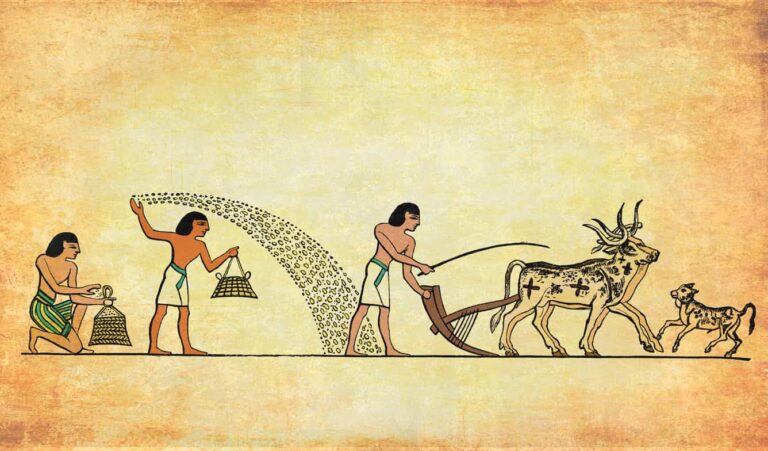
Photo: Ancient Egypt Agricultural Work, workers plowing and planting seeds
Credit: iStock, Luisa Vallon Fumi
Consider the notion of “suffering with his eye,” a phrase that vividly captures the experience of health-related setbacks. In today’s context, it echoes the challenges posed by health issues that can disrupt work schedules and impact overall well-being. Similarly, “wife or daughter bleeding” a reference to menstruation, draws attention to the role of gender-specific experiences in shaping work dynamics—a topic that remains relevant as societies evolve in their understanding of gender equality.
The collaborative nature of work is another parallel that transcends time. Just as Hornefer assisted his boss, modern workplaces thrive on teamwork and interdependence. The balance between aiding colleagues and maintaining individual tasks is a challenge faced by professionals across generations.
Furthermore, the inclusion of religious activities in the inscriptions underscores the complex interplay between work and spirituality. This mirrors the contemporary quest for meaning and purpose in one’s professional endeavors, with individuals seeking opportunities to align their values with their work.
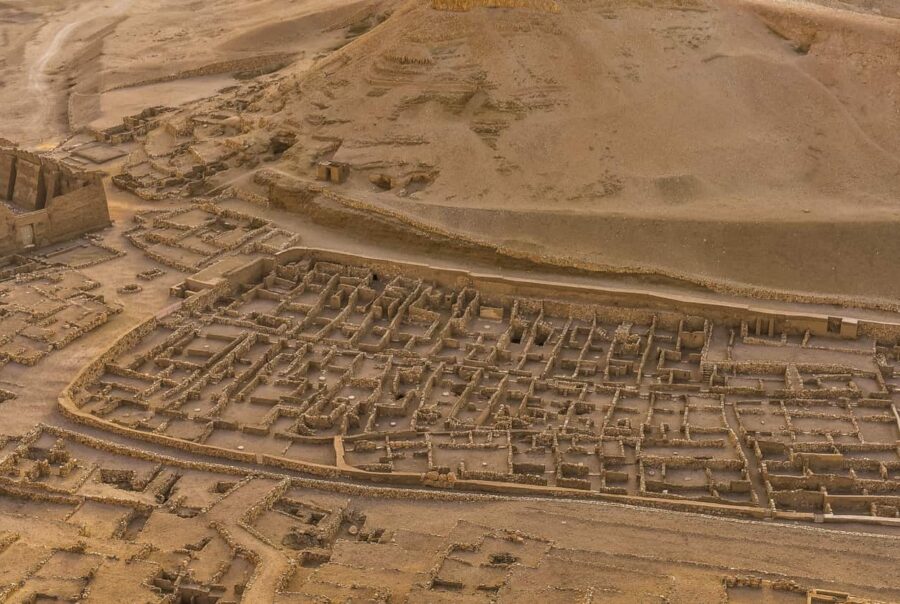
Photo: Ancient ruins at the village of The Workers at Deir El-Medina, Egypt
Credit: iStock, stigalenas
The mosaic of reasons behind absences also emphasizes the multifaceted nature of workers’ lives. From brewing beer, a routine that sustained ancient Egyptians, to embalming relatives and wrapping corpses, the inscriptions reveal the diverse responsibilities that shaped their existence. This mirrors the modern reality where professionals juggle a multitude of roles, from work commitments to familial obligations and personal pursuits.
As we stand on the precipice of an era shaped by artificial intelligence, remote work, and rapid digital transformations, the ostracon serves as a reminder that the intricacies of human nature endure through time. The stories engraved on this ancient tablet echo the stories of today’s workforce, weaving a tapestry of shared experiences and challenges.
Conclusion: Bridging Eras, Uniting Themes
The ancient limestone tablet, a window into a bygone era, offers timeless insights that resonate with our modern lives. Beyond its historical context, this ostracon reveals the enduring pursuit of balancing work and life—a challenge as relevant today as it was during Ramses II’s reign.
Immersed in the landscapes of ancient Thebes, the artifact’s rediscovery speaks of aspirations, struggles, and the human quest for equilibrium. It serves as a passage through time, connecting us with the age-old desire to harmonize labor with personal well-being.
Etched inscriptions reflect lives long past, offering glimpses into diverse motivations for work absences. Surprisingly familiar themes emerge—collaboration, health setbacks, gender dynamics, and the interplay between work and values. These echoes bridge the chasm of centuries.
As we navigate the rapid transformations of the digital age, this ancient relic whispers a reminder: our core challenges are perennial. The art of balance remains timeless, weaving a thread that links the tapestry of human experience across eras.
In essence, the ostracon invites us to honor our shared narrative, drawing wisdom from the past as we shape the future. The rhythm of work, life, and purpose echoes ceaselessly, uniting us with those who came before and guiding us forward.
Request a free Demo!
Take the first step towards a complete workforce management solution. Talk to us today!
About Tomislav Rucevic
Tomislav Rucevic, an SEO Specialist at Softworks, stands out as more than just a marketer. He’s a fervent writer and influential thinker passionate about Workforce Management, HR, and work-life dynamics. Holding an MBA in Marketing, Tomislav excels in creating content that delves into the complexities of the modern workplace.
His dedication to writing on these topics is highlighted in his MBA thesis, which examined the link between Employee Motivation and Quality Improvement. At Softworks, he expertly merges his SEO skills with his writing prowess, contributing to the company’s digital success and advancing discussions on enhancing work environments and achieving work-life balance.

